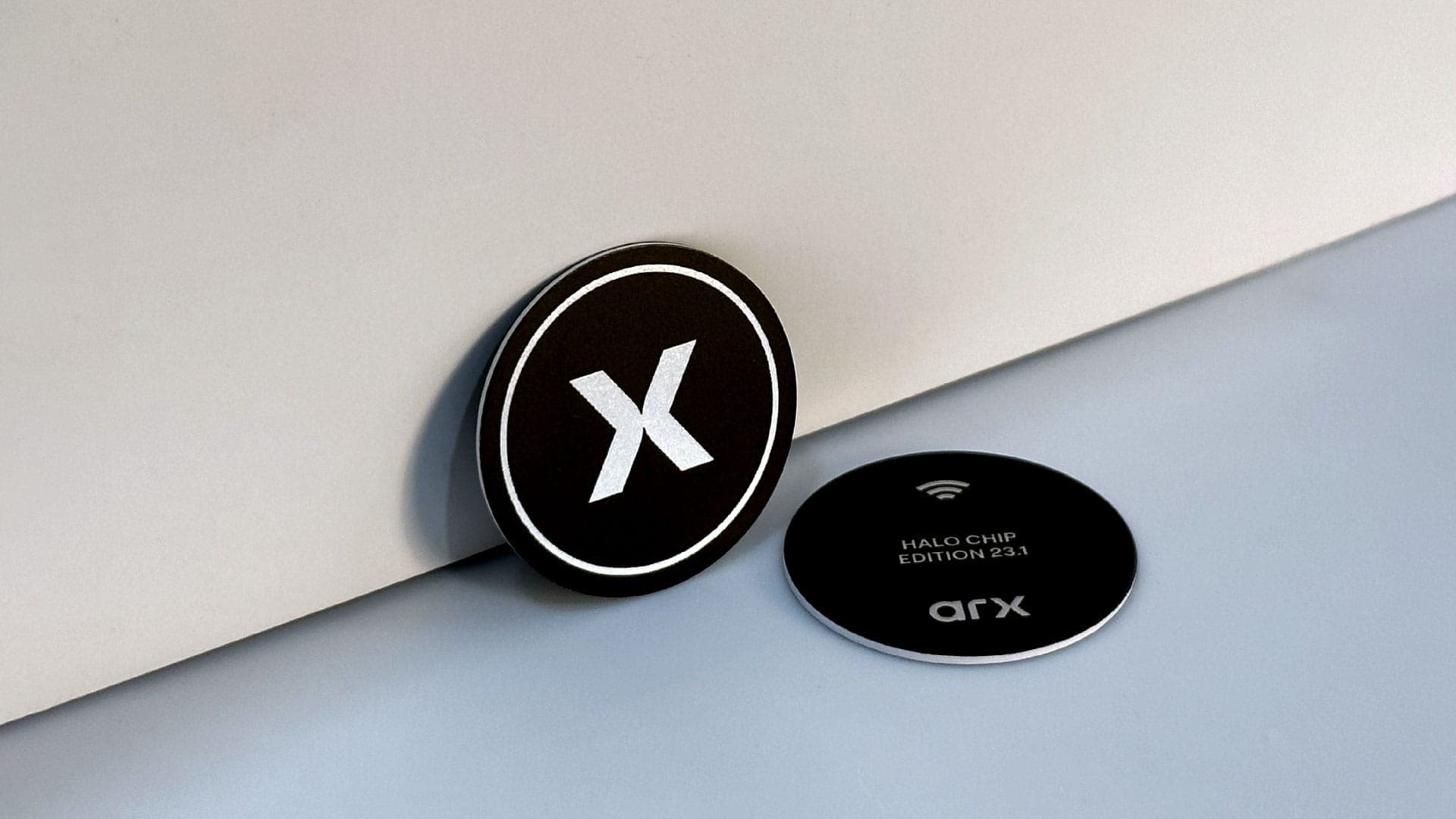Introduction
Arx Research makes secure chips and protocols that transform physical things into digital assets. Brands and creators can use these chips and protocols to create eternal physical crypto assets (opens in a new tab) of any form -- fashion, collectables, art or virtually any item that a chip can be affixed to. It serves as the manufacturing hub for KONG Land (opens in a new tab) through which it supplies chips to many DAOs and web3 projects.
How Arx Chips Work
At the heart of every Arx secure chip is a cryptographic identity that can be used to authenticate the chip on-chain permissionlessly. These include the SiLo and HaLo which use ECDSA signatures for authentication as well as to carry out on-chain actions.

There are a variety of ways that you can link digital assets -- like ERC-20 tokens and NFTs -- to chips leveraging custom function calls or escrow contracts which release assets upon signing. The Physically Backed Token (opens in a new tab) or PBT is a novel non-fungible token (opens in a new tab) that links physical assets immutably on-chain while ensuring that it can only be transferred through chip signatures. PBTs can still be viewed in existing wallets like standard ERC-721 (opens in a new tab) NFTs.
See Highlighted Projects for example projects.
Linking Chips and Assets with ERS
The Ethereum Reality Service or ERS is an open set of protocols that serves two important purposes: a canonical resource to resolve secure chips to smart contracts and to attest to the nature of who created and embedded a given secure chip.
By default every HaLo chip directs to vrfy.ch, a long lived neutral domain that conducts lookups on ERS, similar to eth.limo and ENS. Once enrolled, every chip in ERS can be looked up and resolved to the intended resource. While this can be a performant centralized server, IPFS CIDs will ultimately be the primary recommended destination for lookups due to their potential to serve long-lived dapps.
ERS is currently permissioned and in alpha. If you have chips that you would like to create ERS records for, please contact ers@arx.org.
Getting Started
You can use a HaLo chip in a variety of ways, so it's important to consider how the chip will store or be linked to crypto assets.
By default, all HaLo chips come with a demonstration minting app which walks the user through the creation of an EIP-712 signature from the chip which could be used at a later point in time to mint an asset on chain. This app directs you to upload content as well as a name and a description for the chip. It's a great way to cryptographically link content to a chip off-chain.
If you have a HaLo chip on hand, you can test the minting app (opens in a new tab) via a mobile browser like Safari or Chrome:

If you wish to link something on-chain to a chip, we recommend starting with a token like the PBT -- an ERC-721 compatible token that is permanently tied to the chip. With the PBT you can link content like images and videos to chips while allowing for the holder of the chip to claim ownership on chain. The PBT demonstrates how the holder of a chip can pass signatures to a contract from the chip in order to carry out actions like claiming ownership.
Potential Applications
You can leverage a HaLo chip as a signer or wallet in any smart contract or offchain -- some possibilites include:
- Using a HaLo as a hot wallet to validate ownership of a cold wallet in Delegate.cash (opens in a new tab)
- Adding a HaLo as a signer on a multisig wallet like Safe (opens in a new tab)
- As a means of distributing privacy preserving zero knowledge stamps like Zupass (opens in a new tab)
- Distributing governance tokens to your newly formed DAO IRL like BeadDAO (opens in a new tab)
- Unlock your doors with chip signatures Twitter (opens in a new tab)